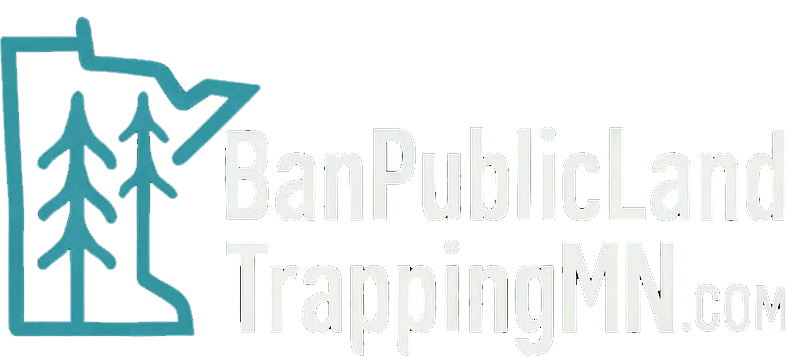A Walk Gone Wrong: Why Trapping Doesn’t Belong on Minnesota’s Public Lands
It was supposed to be an ordinary winter walk—a crisp afternoon on a public trail, a loyal dog running ahead through the snow, nose to the ground, tail wagging with joy. But within seconds, everything changed. What should have been a peaceful outing turned into heartbreak when a hidden trap—a conibear—snapped shut.
The dog never came home.
Stories like this aren’t rare in Minnesota. They happen quietly, often without news coverage or accountability. Legal traps, set on land that belongs to all of us, wait unseen beside trails, along waterways, and in the woods where families hike and pets roam. And every year, innocent animals—both wild and domestic—pay the price.
This isn’t about one dog. It’s about a system that allows suffering in spaces meant for safety.
The Hidden Danger on Public Land
Public lands are meant for everyone—hikers, hunters, birdwatchers, families, and yes, dogs. But right now, Minnesota’s regulations allow lethal traps like conibears and snares to be set in many of these shared spaces with little or no warning.
These traps are designed to kill quickly, but often they don’t. And they don’t discriminate between a wild animal and a beloved pet. For a dog chasing a scent or exploring brush near a trail, a legally set trap can be a death sentence.
The worst part? Most people don’t even know these devices are out there.
A Question of Fair Use
When we talk about public land, we talk about shared ownership and shared responsibility. But trapping privileges a few individuals at the expense of everyone else—and at the expense of safety and compassion.
Families shouldn’t have to fear that an afternoon walk could end in tragedy. Outdoor recreation shouldn’t come with hidden hazards. Wildlife management shouldn’t mean unnecessary suffering.
Allowing traps on public land isn’t fair use—it’s reckless policy.
Wildlife Suffers Too
Trapping doesn’t just harm pets. It takes a toll on Minnesota’s wildlife and ecosystems. Beavers, foxes, otters, bobcats, and countless other animals play vital roles in maintaining healthy environments. When they are removed indiscriminately, natural balances are disrupted.
A trapped beaver means one less wetland. A trapped fox means more rodents. The ripple effects are real and long-lasting. Trapping may once have been part of Minnesota’s heritage, but today, it’s an outdated practice that no longer aligns with our ecological understanding or moral values.
Time for Change
Minnesota prides itself on its connection to nature. We celebrate our lakes, forests, and wildlife. But if we truly respect these things, we must take responsibility for protecting them.
Banning traps on public lands would:
- Prevent needless suffering of pets and wildlife.
- Restore public confidence in outdoor safety.
- Promote humane and science-based wildlife management.
It’s not about taking away tradition—it’s about taking the next step toward coexistence and compassion.
Moving Forward
The family who lost their dog didn’t set out to start a movement. They went for a walk, like so many of us do. But their loss shines a light on something that shouldn’t be happening at all.
No family should ever have to experience that pain. No one should fear walking the trails of Minnesota’s public lands. And no more animals—wild or domestic—should die because of an outdated and dangerous practice.
Trapping has no place on Minnesota’s public lands.
It’s time for our state to choose safety, compassion, and progress over cruelty hidden in the woods.
Recent Posts


